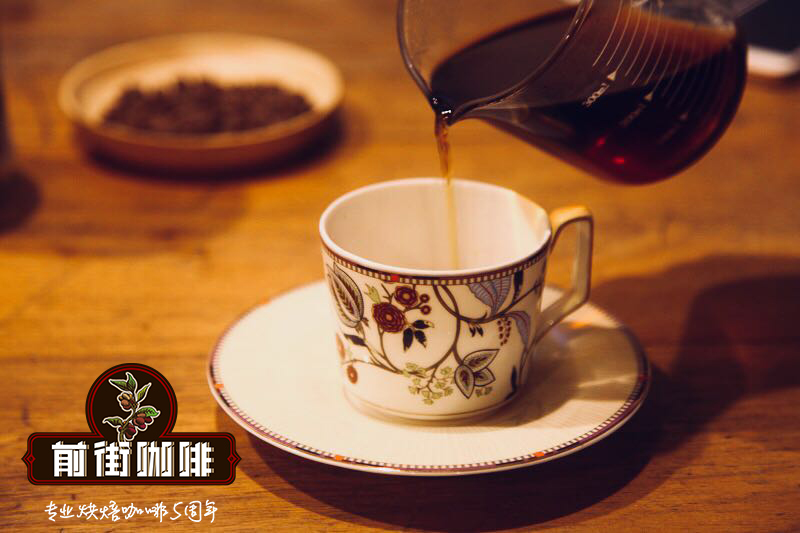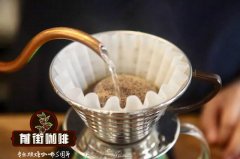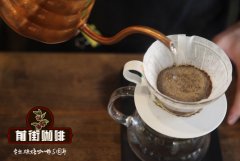Papua New Guinea Lamari Cooperative introduces how is the taste of Papuan coffee from minority producing areas?

、
Professional coffee knowledge exchange more coffee bean information please follow the coffee workshop (Wechat official account cafe_style)
Compared with big coffee producers such as Brazil or Panama, Papua New Guinea can be said to be a forgotten coffee producer.
The Lamari Cooperative, named after the Lamari River River, is located in the fertile eastern highlands. The manor collects coffee grown by nearby small coffee farmers for sale. The coffee produced in the Lamari Valley is the best in Papua New Guinea. After years of collection, pulp removal, screening, fermentation and drying steps, the manor has improved many coffee production skills, and the manor cooperates with small coffee farmers. Can combine strength to improve competitiveness in the international boutique coffee market.
Light baking brings a refreshing texture, the entrance first tastes of flowers, then tastes like plum and peach tea, and finally with chocolate flavor.
Papua New Guinea is an island country in the southwestern Pacific Ocean, bordering Indonesia in the west and Solomon Islands in the east. Miraculously, Papua New Guinea has highlands and produces the only cash crop: coffee! The most famous is the "Bird of Paradise Coffee", especially the Sigri Manor that sells the Bird of Paradise Coffee all over the world. Sigri Manor is located in the Wahgi Valley of the western plateau, with an average elevation of 1600 meters above sea level, with a cool climate and ample Rain Water, so that coffee trees have good growth conditions.
The vast majority of PNG coffee is made up of small farmers, rather than large organized companies, and more farmers grow coffee trees from 20 to 500 or 600. PNG basically uses no artificial fertilizers, no chemical sprays, and all farm diseases and insect pests are controlled by hand.
The original three-stage washing method, three times of 24-hour washing process, can completely remove the pulp, and then dry it in the natural sun.
Take the most eye-catching boutique AA and An as an example:
The main results are as follows: (1) AA and Grade A coffee belong to the grade of boutique coffee, mainly from larger estates.
In the case of AA, the size of the bean is larger than 18 mesh, and the shape of the bean is oval. Number of shortcomings: a maximum of 10 defects per kilogram. The appearance of raw beans is green and slightly blue. The taste of raw beans should be clean and the taste of baking should be clean and smooth. The taste of the cup should be excellent (Fine Cup).
(2) the size of Class An is larger than that of 17 mesh, and the cup test must be at least GTF (Good to Fine), that is, good to excellent taste-the number of other defects and the condition of raw beans are the same as AA.
END
Important Notice :
前街咖啡 FrontStreet Coffee has moved to new addredd:
FrontStreet Coffee Address: 315,Donghua East Road,GuangZhou
Tel:020 38364473
- Prev

What is the taste of geisha / Rosa coffee? How should Rosa coffee be made to taste good?
Professional coffee knowledge exchange more coffee bean information please follow the coffee workshop (Wechat official account cafe_style) what is geisha coffee? Is it related to Japan? In fact, it has nothing to do with traditional Japanese geisha. Geisha / Gesha is a special kind of coffee, such as bourbon, Pacala, regular coffee and so on. It was in Ethiopia in the 1930s.
- Next

How should I drink the coffee at PNG Manor? Varieties of coffee grown in Papua New Guinea?
Professional coffee knowledge exchange more coffee bean information please follow the coffee workshop (Wechat official account cafe_style) is located in Papua New Guinea Anjip Manor Y1, 1500 meters above sea level, washing treatment, bean appearance and raw bean quality is far superior to the general commercial coffee beans, belonging to the affordable price of premium coffee PNG Manor coffee from the southern part of the province of Morocco
Related
- Detailed explanation of Jadeite planting Land in Panamanian Jadeite Manor introduction to the grading system of Jadeite competitive bidding, Red bid, Green bid and Rose Summer
- Story of Coffee planting in Brenka region of Costa Rica Stonehenge Manor anaerobic heavy honey treatment of flavor mouth
- What's on the barrel of Blue Mountain Coffee beans?
- Can American coffee also pull flowers? How to use hot American style to pull out a good-looking pattern?
- Can you make a cold extract with coffee beans? What is the right proportion for cold-extracted coffee formula?
- Indonesian PWN Gold Mandrine Coffee Origin Features Flavor How to Chong? Mandolin coffee is American.
- A brief introduction to the flavor characteristics of Brazilian yellow bourbon coffee beans
- What is the effect of different water quality on the flavor of cold-extracted coffee? What kind of water is best for brewing coffee?
- Why do you think of Rose Summer whenever you mention Panamanian coffee?
- Introduction to the characteristics of authentic blue mountain coffee bean producing areas? What is the CIB Coffee Authority in Jamaica?

